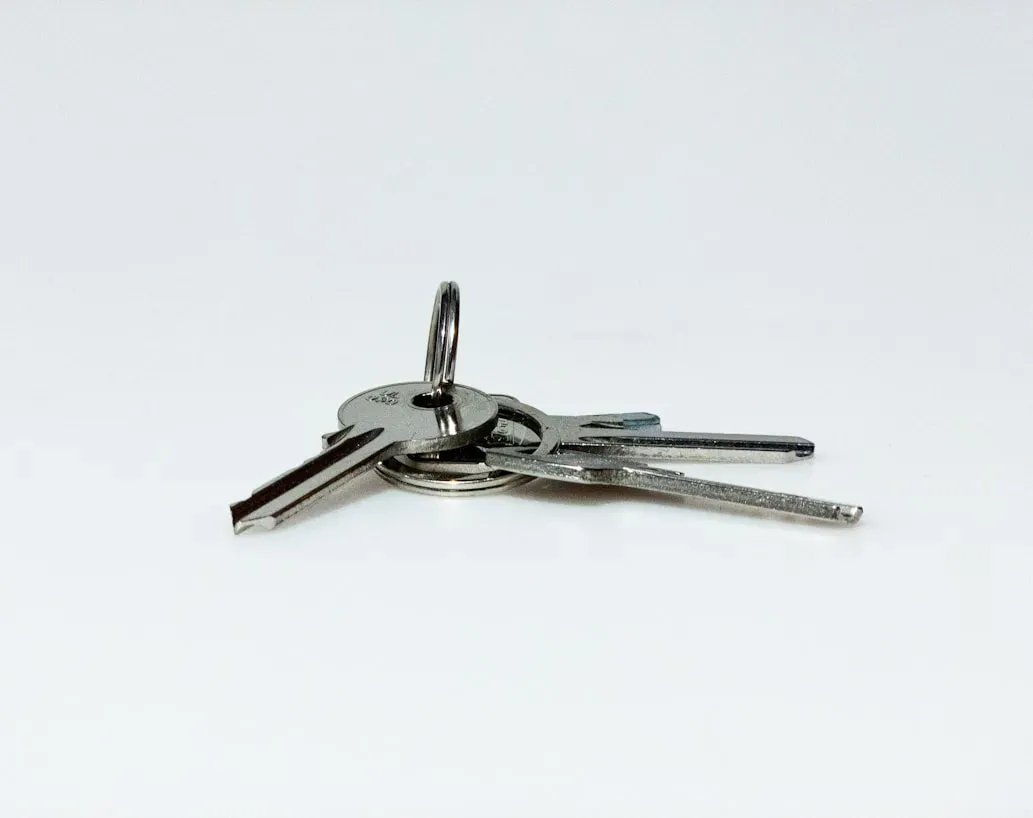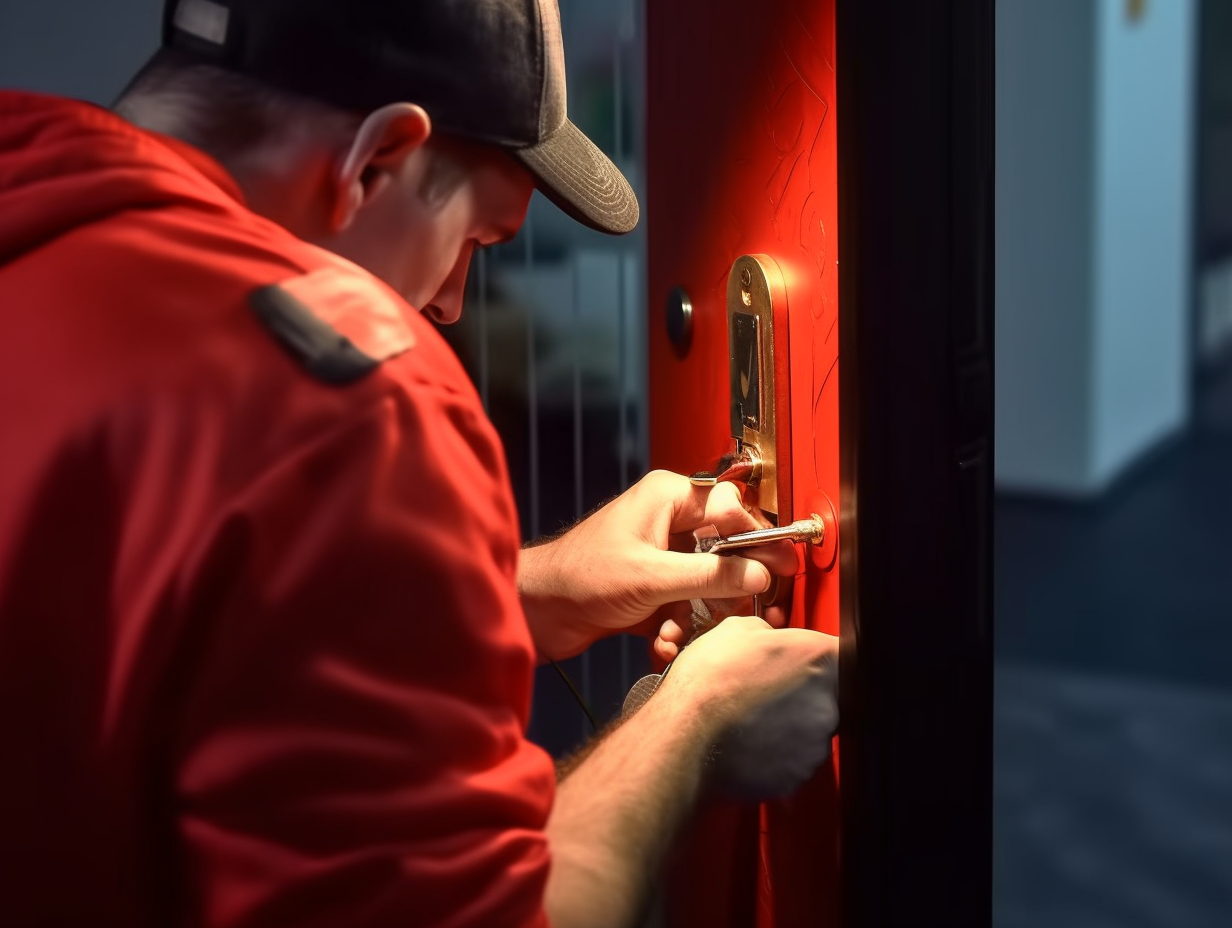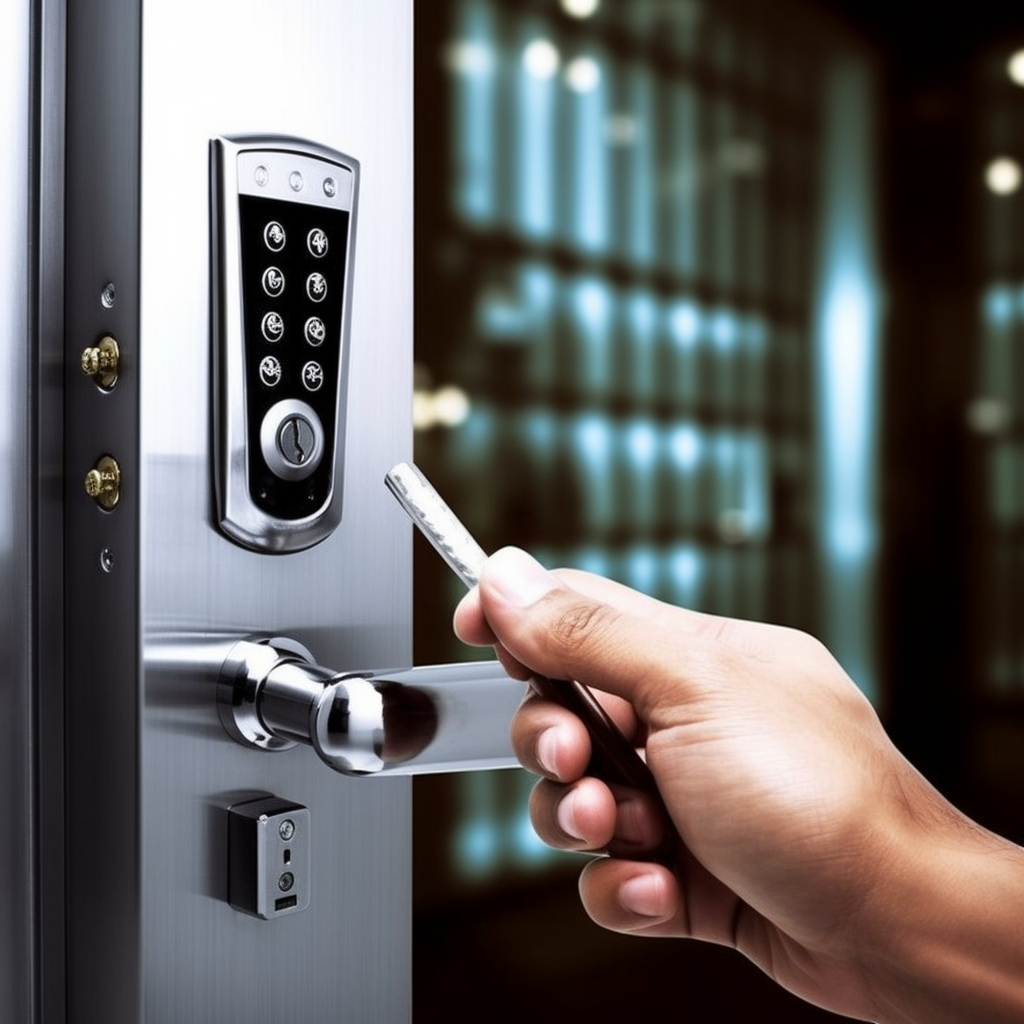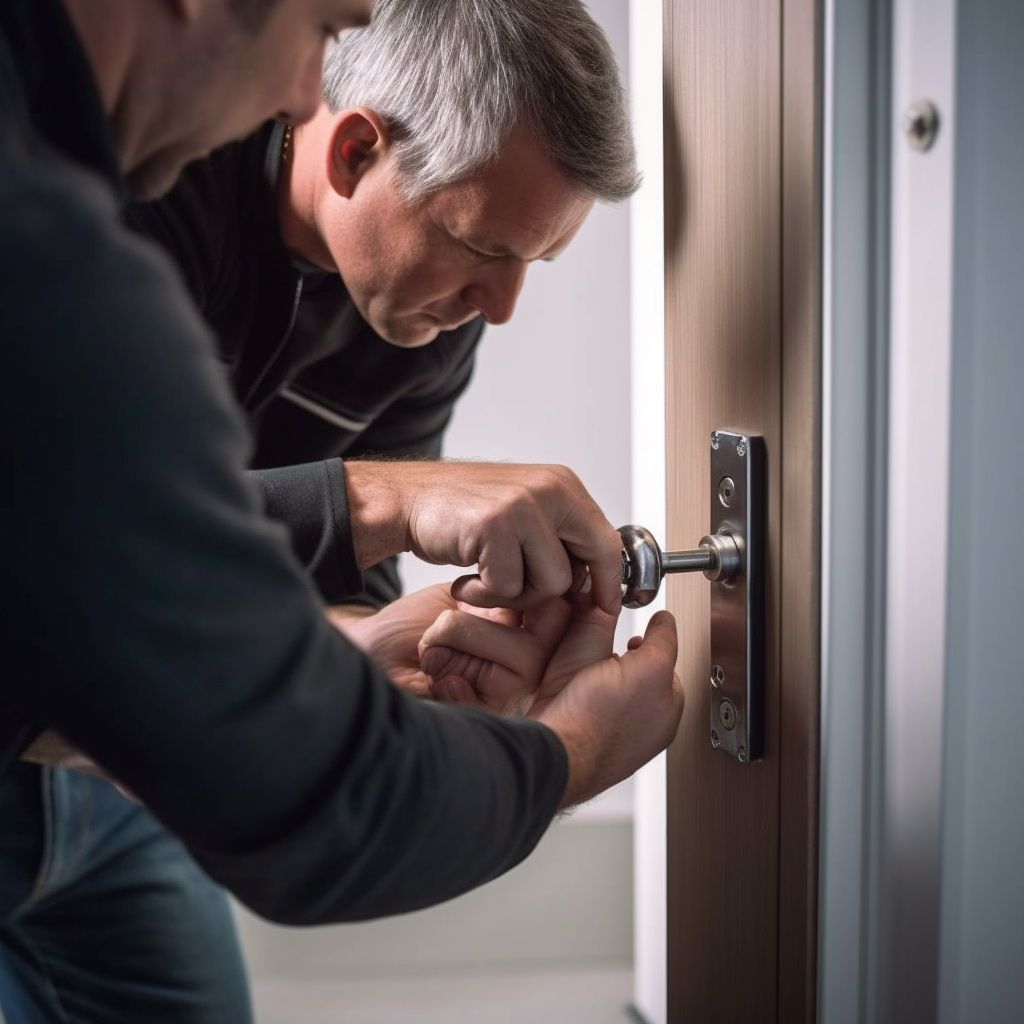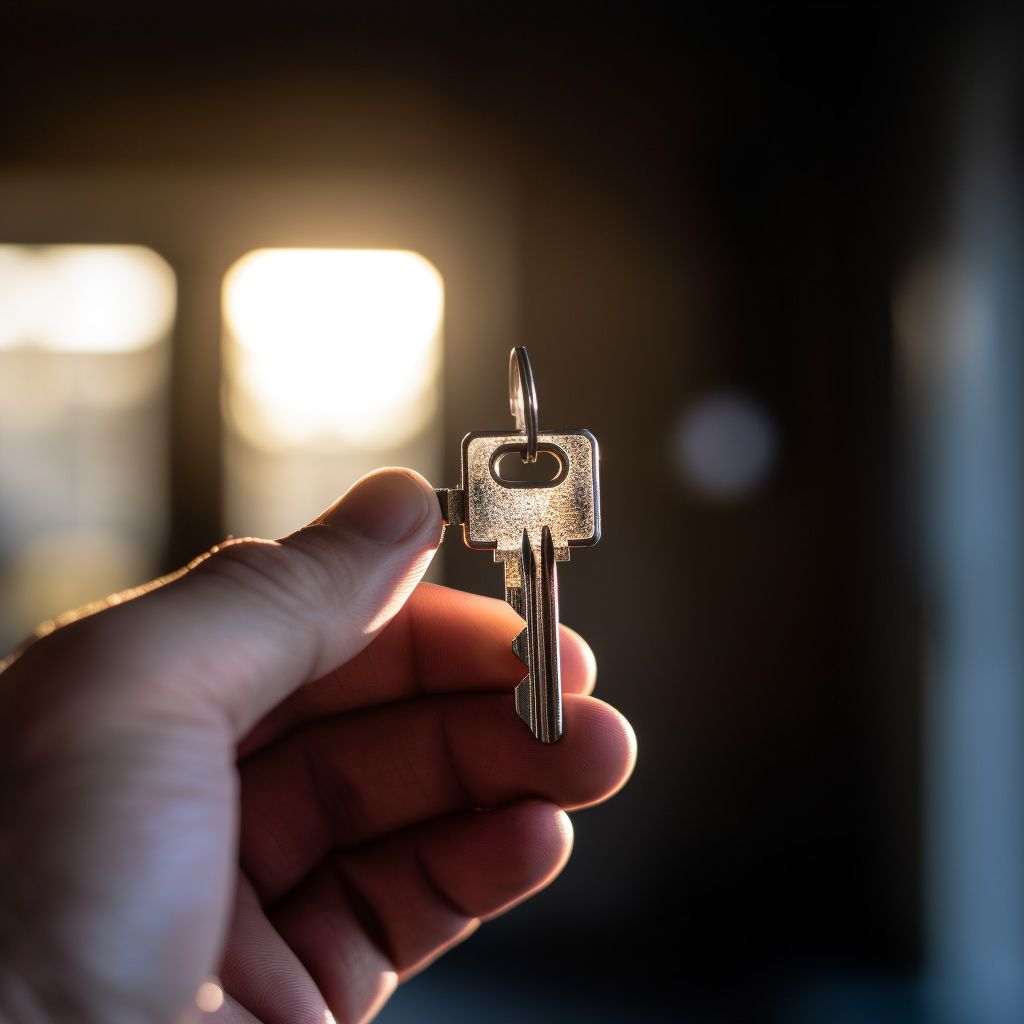OPEN 23 1/2 HOURS A DAY | EMERGENCIES ONLY AFTER 5PM
*standard questions and inquiries will be addressed from 9-5
Rekeying After a Break-In

Ever had that sinking feeling after a break-in? It's not just the loss that hits hard; it's the shattered sense of safety in your own home. Rekeying your locks is a crucial first step in reclaiming your peace of mind and security. This guide dives deep into the why and how of rekeying after a break-in, backed by the latest stats and expert advice. Whether it's understanding the rekeying process, picking the right locksmith, or beefing up your home's security, we've got you covered. Let's turn this around and make your home a fortress of safety and comfort.
Understanding the Basics of Rekeying
What Is Rekeying? At its core, rekeying is changing the internal workings of your existing locks so that old keys won’t work anymore. It’s a simple yet effective way to ensure that anyone with a previous key can't access your property. Unlike replacing locks, rekeying is cost-effective and quicker, making it an ideal choice post-break-in.
Why Rekey? Post-break-in, your home's vulnerability is glaringly exposed. Rekeying immediately eliminates any risk of the intruder re-entering with a stolen or copied key. It's not just about physical security; it's about restoring your peace of mind.
By the Numbers: Recent statistics underline the urgency—nearly 30% of burglars enter through an unlocked door or window. But here’s a kicker: a significant chunk of break-ins are committed by someone with prior access. Rekeying cuts this risk down to zero.
Rekeying is your first line of defense after a break-in. It's simple, it's efficient, and it’s your move towards taking back control.
The Rekeying Process Explained
DIY or Professional? You’ve got two paths: roll up your sleeves for a DIY project or call in a pro. Let’s break down both.
DIY Rekeying: Ideal for the hands-on homeowner. Most hardware stores sell rekeying kits compatible with popular lock brands. The process involves removing the lock from the door, replacing the pins inside, and matching them to a new key. It’s crucial to follow the kit instructions to the letter. A wrong move could damage the lock or compromise your home's security.
Professional Rekeying: For those who prefer a hassle-free approach. A professional locksmith can rekey your home quickly and efficiently, ensuring everything is done right the first time. They can also spot wear or potential weaknesses in your locks that might need attention.
Pros and Cons
- DIY: Cost-effective but requires precision. Mistakes can be costly.
- Professional: More expensive, but offers peace of mind knowing the job’s done right. Plus, you get expert eyes on your home security setup.
Step-by-Step Guide
- Assess Your Locks: Ensure they’re in good condition and compatible with a rekeying kit if you're going DIY.
- Gather Tools: For DIY, you’ll need a rekeying kit, screwdriver, and needle-nose pliers.
- Remove the Lock: Carefully take the lock off the door, following the kit instructions or a professional’s guidance.
- Change the Pins: Replace the old pins with new ones provided in the kit, matching them to the new key configuration.
- Reassemble and Test: Put the lock back together and ensure it works smoothly with the new key.
Sidebar/Callout: Always have a spare key and keep it in a safe, accessible place. In emergencies, having quick access to a backup can be a lifesaver.
Rekeying is more than just changing keys; it’s about ensuring your locks are tailored to your security needs. Whether DIY or professional, the peace of mind it brings is priceless.
Enhancing Your Home Security Post-Rekeying
Rekeying is just the start. To truly secure your sanctuary, consider layering your security measures. Here’s how to fortify your home:
Upgrade to Smart Locks: Smart locks offer keyless entry and can be controlled remotely via your smartphone. They allow you to track who enters and leaves your home and when. For added security, combine them with traditional locks.
Install a Security System: Modern security systems include alarms, motion detectors, and 24/7 monitoring services. They not only deter intruders but can also alert you and the authorities of any suspicious activity.
Add Security Cameras: Cameras act as both a deterrent and a means of evidence collection. Place them at key entry points. With real-time monitoring capabilities, you can keep an eye on your home from anywhere.
Illuminate Your Property: Well-lit exteriors leave fewer hiding spots for burglars. Consider motion-sensor lights that activate when someone approaches.
Secure Windows and Doors: Reinforce entry points with deadbolts and window locks. Don’t overlook the garage door, a common entry point for intruders.
Trends and Tech: Stay informed about the latest in home security technology. Innovations like biometric scanners for locks and AI-driven security systems are on the rise.
Case Studies: Learn from others. Many homeowners have shared their experiences with various security measures, highlighting what worked (and what didn’t) for their homes.
Enhancing your home’s security doesn’t just protect your physical property; it also safeguards the peace of mind you deserve. With these steps, you’re not just responding to a break-in; you’re preventing the next one.
Selecting a Professional Locksmith
In the aftermath of a break-in, choosing a reputable locksmith is more than a convenience—it’s a necessity. Here’s how to ensure you pick the right one:
Check Credentials: A trustworthy locksmith is licensed, bonded, and insured. These credentials protect you and your property during the rekeying process.
Read Reviews and Ratings: Online reviews and ratings can provide insight into a locksmith’s reliability and quality of service. Look for patterns in feedback that indicate professionalism and expertise.
Ask for Recommendations: Word-of-mouth is powerful. Ask friends, family, or neighbors for locksmith recommendations. Personal experiences can lead you to a reliable service.
Experience Matters: Choose a locksmith with extensive experience, especially in dealing with post-break-in scenarios. They'll offer valuable advice on securing your home against future incidents.
Questions to Ask:
- Can you provide a list of references?
- What is your experience with home security systems?
- Do you offer a warranty on your work?
Red Flags to Watch For:
- Extremely low quotes that seem too good to be true.
- Lack of a physical address or use of a generic vehicle.
- Pressuring for immediate, unnecessary upgrades.
Preventative Measures to Avoid Future Break-Ins
Taking proactive steps now can save you from the stress and loss of another break-in. Here are key strategies to bolster your home's defenses:
Strengthen Entry Points: Ensure all doors have sturdy frames, protected hinges, and deadbolt locks. Windows should have locks and, if possible, security film to prevent shattering.
Visibility is Key: Trim bushes and trees near windows and doors. High, thick foliage can provide cover for burglars. Keep your property visible to neighbors and passersby.
Security Signs and Stickers: Even if you don’t have a security system, signs or stickers can deter potential intruders by suggesting your home is monitored.
Community Watch: Engage with your neighborhood watch program if available. An active community is a strong deterrent to crime.
Routine Checks: Regularly inspect your home for vulnerabilities. Make sure locks are functioning, security systems are active, and no valuables are visible from the outside.
Vacation Protocol: When away, make your home appear occupied. Use timers on lights, pause mail delivery, and ask a neighbor to park in your driveway.
Digital Security: In today’s smart home era, secure your Wi-Fi network and any connected devices. Cybersecurity is an often-overlooked aspect of home security.
Education is Power: Stay informed about local crime trends and adjust your security measures accordingly. Knowledge of common tactics used by burglars can help you stay one step ahead.
Coping with the Aftermath of a Break-In
Beyond the immediate security measures, it's important to address the emotional impact of a break-in. Feeling safe in your home again takes time and support:
Seek Support: Talk to friends, family, or professionals about your experience. You're not alone, and sharing can be incredibly healing.
Restore Your Space: Make positive changes to your living environment. Sometimes, rearranging or updating your space can help in reclaiming it emotionally.
Community Resources: Look into support groups or community resources. Many areas have organizations dedicated to helping victims of property crimes.
Stay Active: Physical activity can reduce stress and improve mental health. Consider adding security-enhancing activities, like self-defense classes, to your routine.
Recovering from a break-in is as much about emotional recovery as it is about physical security. Take the time you need, and don't hesitate to reach out for help. Your sense of security and well-being is paramount.
Conclusion
Rekeying after a break-in is the first step in a journey back to feeling secure in your own home. By understanding the rekeying process, enhancing your home's security, choosing the right locksmith, and implementing preventative measures, you can protect your sanctuary against future threats. Remember, the goal isn't just to secure your home—it's to secure your peace of mind. Take action today and take back your sense of safety.
CONTACT INFORMATION




